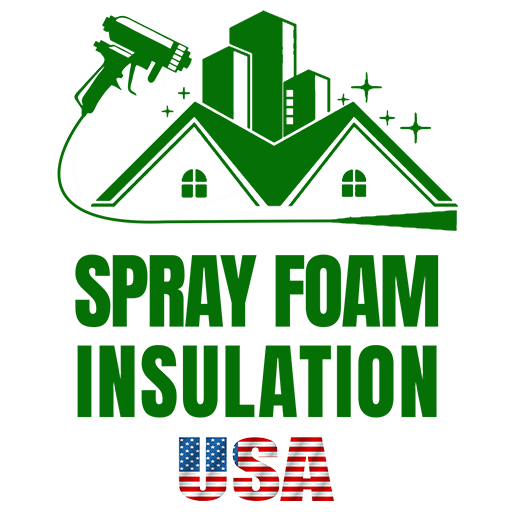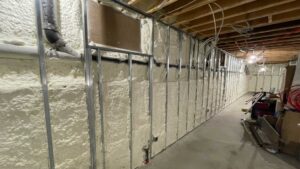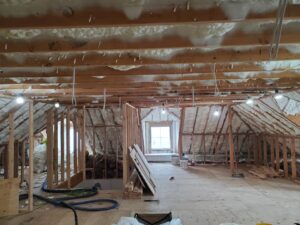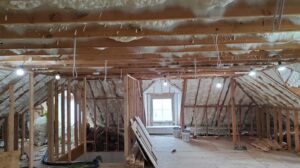Insulation is key to keeping your home cozy in winter and cool in summer. If you want a quick answer, remember: Good insulation = more comfort + energy savings. Here’s why it matters:
- Energy Efficiency: Less energy needed to heat or cool your home.
- Comfort: Steady indoor temperatures all year round.
- Eco-Friendly: Lower carbon footprint by using less energy.
Spray Foam Insulation USA specializes in providing top-notch insulation solutions. We focus on energy-efficient, eco-friendly options to meet the needs of homeowners and business owners in NY and NJ. Our goal is to help you reduce energy bills and enhance comfort while contributing to a greener planet.
Proper insulation is not just about filling up spaces in your walls or attic; it’s about creating a barrier that maintains your home’s climate, making it a more pleasant place to live and work. Whether it’s the blazing summer heat or the biting winter cold, well-installed insulation keeps the outdoor elements at bay, ensuring your indoor environment remains constant.
For anyone looking to upgrade their home’s insulation, choosing the right materials and understanding their properties is paramount. From fiberglass to foam, each option has its pros and cons depending on your specific needs. At Spray Foam Insulation USA, we believe in using materials that not only provide exceptional thermal resistance but are also kind to the planet.
This introduction is just the start. As you read on, you’ll discover the various insulation materials available and which might be best for your home, how different types of insulation work, and the overall benefits of making sure your residence is properly equipped against the elements.
Understanding Insulation Materials
When it comes to residential insulation, choosing the right material is crucial. Each type has its unique properties, benefits, and considerations. Let’s dive into the most common insulation materials: Fiberglass, Cellulose, Foam, Mineral wool, and Natural fibers.
Fiberglass
Fiberglass insulation is a giant in the insulation world. It’s made from tiny glass fibers and is popular because it’s cost-effective and easy to install. You’ll find it in two forms: batts and rolls, which are perfect for DIY projects, and loose-fill for professional installation. Fiberglass is non-combustible and resists moisture, making it a safe choice for many homes. However, handle it with care to avoid irritation.
Cellulose
Cellulose is the eco-warrior of insulation materials. Made from recycled paper products, primarily newsprint, it’s treated with fire retardants to enhance its safety. Cellulose can be installed as loose-fill insulation, making it excellent for filling in odd shapes and sizes in attics or walls. It has a higher R-value per inch than fiberglass, offering better thermal resistance but can settle over time, potentially reducing its effectiveness.
Foam
Foam insulation comes in two main types: spray foam and rigid foam boards. Spray foam expands to fill gaps and cracks, providing an airtight seal that significantly reduces energy loss. It’s excellent for hard-to-reach areas and can improve air quality by reducing outdoor allergens and pollutants in the home. Rigid foam boards offer high insulation values and moisture resistance, making them ideal for basement walls and under floors.
Mineral Wool
Mineral wool can refer to rock wool or slag wool and is made from natural or industrial minerals. It offers excellent fire resistance and soundproofing capabilities, making it a solid choice for those living in noisy areas or seeking extra safety. Mineral wool comes in batts, rolls, or loose-fill, providing flexibility in installation. It’s denser than fiberglass, offering better insulation per inch, but can be more expensive.
Natural Fibers
For those looking for sustainable options, natural fibers like cotton, sheep’s wool, straw, and hemp are attractive choices. These materials are often sourced from recycled content and treated for fire and pest resistance. They provide good thermal and acoustic insulation and are safe to handle, making them a favorite among DIY enthusiasts. However, they can come with a higher price tag compared to more traditional materials.
Choosing the Right Material
Selecting the right insulation material for your home involves considering your climate, budget, and specific insulation needs. For instance, if you’re looking for an eco-friendly option and have a bit more to spend, cellulose or natural fibers might be your best bet. On the other hand, if you’re focusing on areas that require moisture resistance, foam board could be the way to go.
The goal is to enhance your home’s comfort and energy efficiency while reducing your environmental footprint. Consult with a professional to determine the most suitable insulation type for your particular situation. With the right choice, you can enjoy a quieter, more comfortable home and significant savings on energy bills.
In the next section, we’ll explore the different types of residential insulation, helping you understand how to apply these materials effectively in your home.
Types of Residential Insulation
When it comes to keeping your home warm in the winter and cool in the summer, not all insulation is created equal. Different types of residential insulation serve different purposes and are suited for different areas in your home. Let’s break down the options so you can make an informed decision.
Blanket: Batts and Rolls
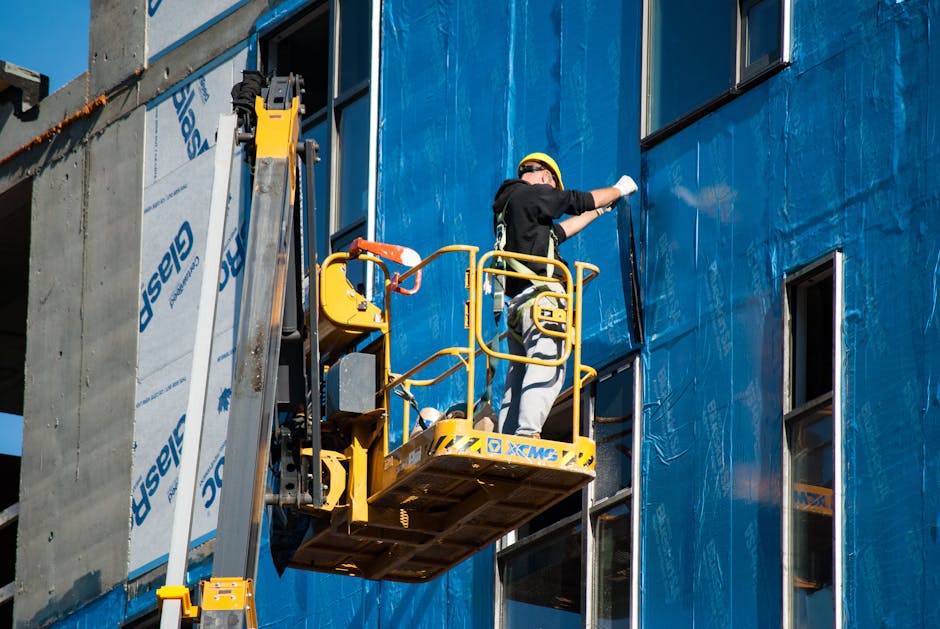
Blanket insulation is the most common type you’ll find in homes, and it comes in the form of batts or rolls. It’s made from materials like fiberglass, mineral wool, plastic fibers, or natural fibers like cotton and sheep’s wool.
- Where to Use It: It’s best used in areas with standard spacing between joists and studs, like walls, floors, and ceilings.
- Installation: It’s relatively easy to install, making it a great DIY project. Just fit it between studs, joists, and beams.
- Advantages: It’s cost-effective and versatile, fitting into various spaces without much hassle.
Foam Board or Rigid Foam

Foam board or rigid foam offers a higher insulation value per inch than most other forms, including blanket insulation.
- Where to Use It: It’s ideal for unfinished walls, including foundation walls, floors, ceilings, and unvented low-slope roofs.
- Installation: These boards can be applied on the interior or exterior of your home but require covering for fire safety and weather protection.
- Advantages: Its high insulating value for relatively little thickness makes it perfect for areas where space is at a premium.
Loose-fill and Blown-in
Loose-fill and blown-in insulation are made from materials like cellulose, fiberglass, or mineral wool. This type of insulation is perfect for filling in nooks and crannies, making it an excellent option for retrofitting.
- Where to Use It: It’s ideal for enclosed existing walls, open new wall cavities, and unfinished attic floors.
- Installation: Professional installation is recommended as it requires special equipment to blow the materials into place.
- Advantages: It can easily fill irregular shapes and around obstructions, providing a comprehensive insulation solution.
Reflective Insulation and Radiant Barriers
Reflective insulation and radiant barriers work by reflecting radiant heat away from your living space, rather than absorbing and slowing heat transfer like other types of insulation.
- Where to Use It: These are most effective in attics, especially in hot climates, to reduce summer heat gain.
- Installation: This type can be a DIY project. It’s typically installed between rafters, joists, and studs.
- Advantages: It can significantly reduce cooling costs in warm climates by reflecting heat away from your home.
Each type of insulation has its place in a home, and often, the best approach is a combination of types to address the different needs of each space. For example, you might use batts in the walls and floors, foam board on the exterior walls, loose-fill in the attic, and reflective insulation under the roof.
For more detailed information on how these insulation types can benefit your specific situation, and to explore eco-friendly options, visit our Advantages of Spray Foam Insulation page. Our solutions are designed to improve your home’s energy efficiency, enhance comfort, and contribute to a healthier environment.
Choosing the right insulation will not only make your home more comfortable but can also lead to significant energy savings. Consider the specific needs of your home, and don’t hesitate to consult with professionals to ensure you’re making the best choices for your insulation needs.

